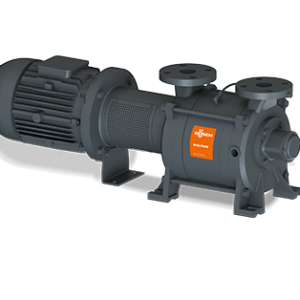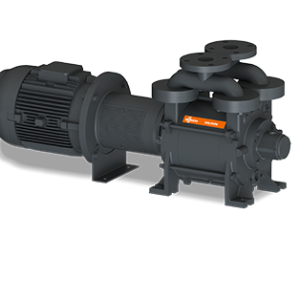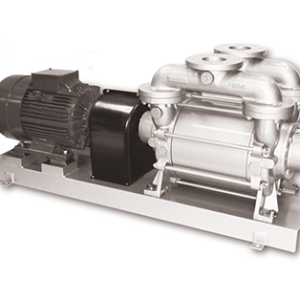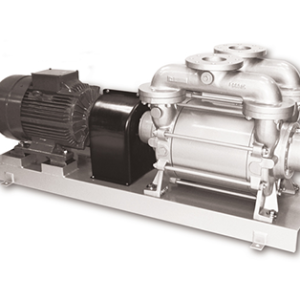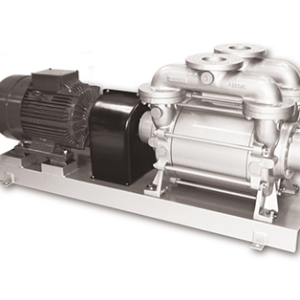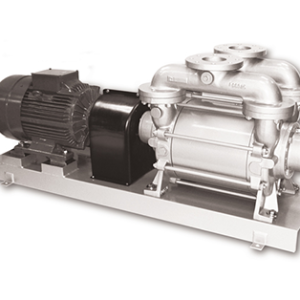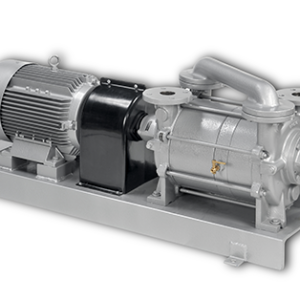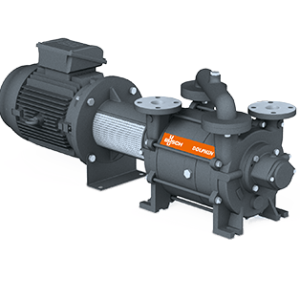An eccentrically mounted impeller rotates in a housing partially filled with operating fluid. The impeller blades dip into the fluid, and the centrifugal force exerted by their rotation forms a so-called liquid ring within the housing.
The pumped medium is transported in the spaces between the blades and the liquid ring. The eccentric rotation of the impeller alters the volume of these spaces. Thereby, the gas is drawn in, compressed and expelled.
In single-stage versions, compression is carried out once. In two-stage versions, the pumped medium is compressed again to allow higher vacuum levels to be achieved.
The operating fluid is usually water, but other liquids may be used if required by the process conditions.
Liquid ring vacuum pumps can be operated as a simple continuous flow system, or as a partial or total recirculation system. Operation as a compressor is also possible.

